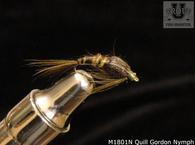
Protecting what can potentially turn into a sizeable investment in trout fishing, your fly rod, is very important. Toward that end, having a fly rod case can save you aggravation and money by preventing fly rod breakage, especially when travelling. Shown below is a simple method on how to make a fly rod case.

Telescoping Fly Rod With Fly Rod Case
For my fly rod case (which is used for my telescoping fly rod), I used 1" Schedule 5 (this means it has approximately a 1-5/16" outside diameter and 1/16" wall thickness) white PVC pipe. Note that if you have a fly rod that breaks down into two or three sections, you will likely need a larger diameter pipe (See the chart here for actual pipe diameters and wall thicknesses). Choose a pipe whose outside diameter minus twice the wall thickness is large enough for your fly rod (once broken down into its individual pieces) can reasonably fit into. Note that some pipe sizes/wall thicknesses may be easier to find at the store than others. Using a hacksaw, cut the pipe to the appropriate length. You may need to file or sand down the cut edge.
You will also need to purchase two end caps for the pipe. In my case, I simply rely on a friction fit between the end caps and the pipe, because I normally store my telescoping fly rod in the back of my fly vest. However, in the general case, you will need to glue (using the special cement specifically designed for PVC pipe) one cap on one end. On the other end of the pipe, drill a hole through both the cap and pipe's end, and use a pin to keep the cap on. Then, to access the interior of the pipe, you can remove the pin and take the cap off.
A refinement to the fly rod case's design is to add an eye hook or strap to the removable pipe cap to allow the fly rod case to be hung from a backpack (while hiking to a stream) or on a nail on the wall at home to store it. Also, you may want to cut a slot in the removable cap end that would allow the fly reel to remain attached to the rod.





